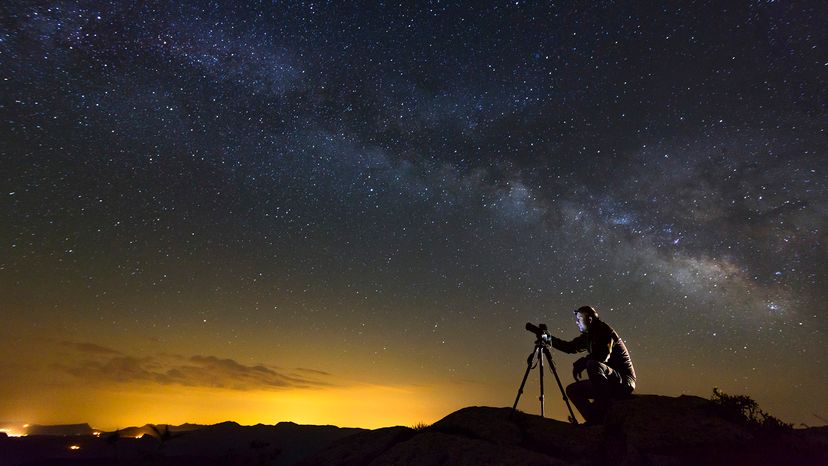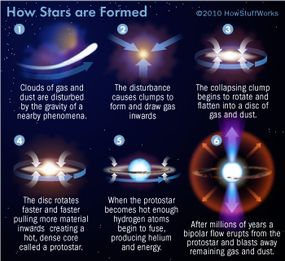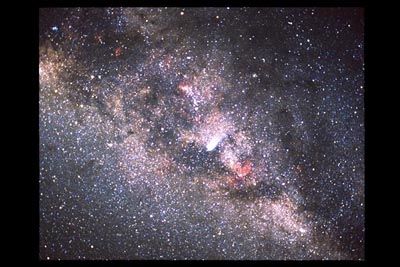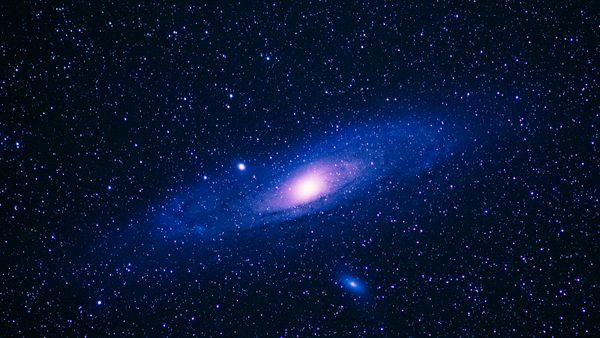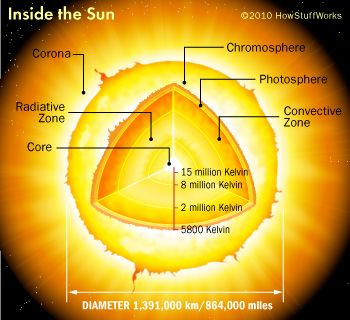In space, nebulae — giant clouds of gas and dust — linger in cold and monotony. Think of them as the quiet, sleepy towns of our Milky Way.
Now, imagine a newcomer, maybe a streaking comet or the shockwave from a distant supernova, racing through. Much like a revving motorcycle waking up an entire block, these disturbances trigger star formation as they stir everything up.
Within these now-active nebulae, particles collide and start to form clumps. As these clumps accumulate more material, they grow in mass. Thanks to their own gravity, they pull in even more gas and dust from the surrounding star-forming region. Over a million years (give or take), these clumps mature into dense bodies known as protostars.
With enough heat and pressure, our protostar's heart ignites, starting nuclear fusion. Hydrogen gas atoms begin to fuse, creating helium and releasing an immense amount of energy.
At this point, however, the outward force of this fusion isn't quite enough to counteract the inward pull of gravity. It's like trying to start a fire with damp wood — there's heat, but not quite the blaze we're expecting ... yet.
The Stellar Balancing Act
Over time, as the protostar draws in more material and heats up further, things reach a tipping point. When enough mass (think about 0.1 times the mass of our own sun) collapses into the protostar, it experiences a dramatic and fiery transformation.
Massive gas jets erupt, clearing away the remaining gas and dust. Eventually, the star reaches a stable state, where the energy it emits perfectly balances the gravitational pull it experiences. Congratulations, our star has now joined the ranks of main sequence stars!
